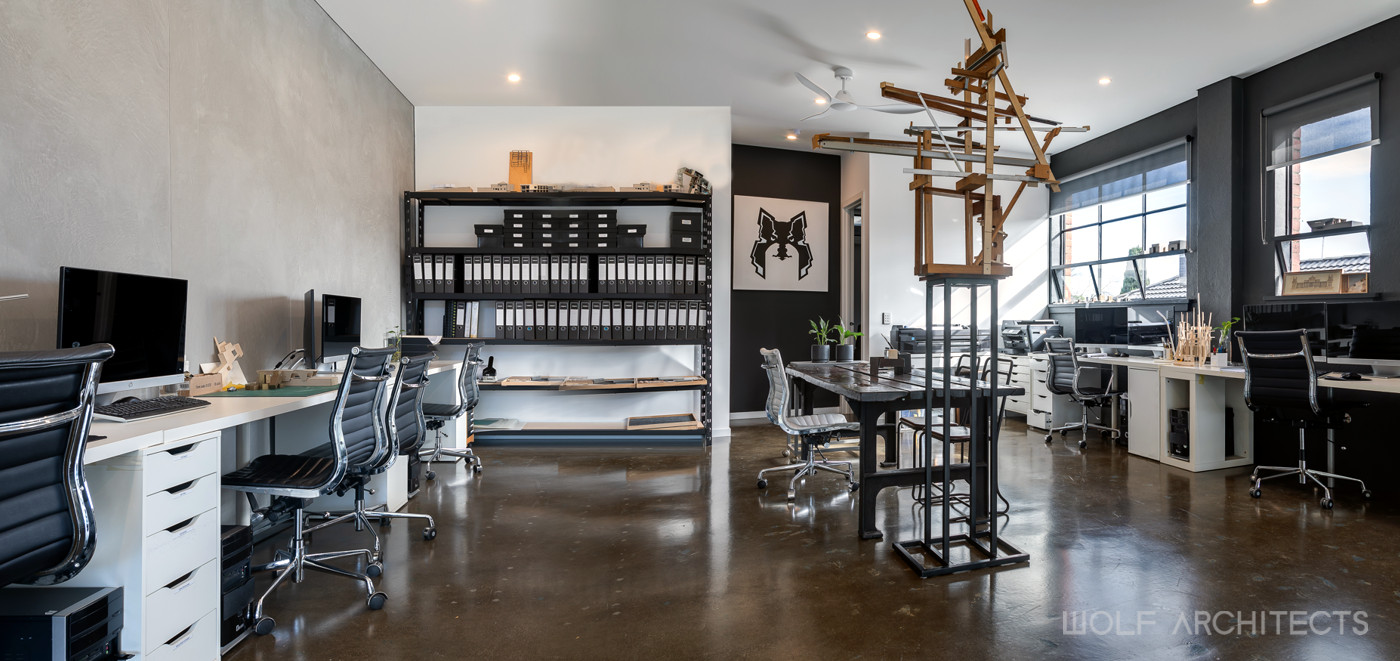
AI has been a game changer across countless industries and its influence continues to grow at an incredible pace. Professions once considered untouchable are being reshaped and architecture is no exception. At WOLF Architects we have been following this evolution closely and we will openly admit that we are onboard. In fact we have already been using AI in our practice for the last few years.
This article offers insight into how AI has been integrated into our workflow so far and what we believe the future may hold for the role of architects in an AI-driven world.
The Early Days of AI at WOLF
Our first steps with AI were modest. Like many businesses we began by using it to improve communications from refining letters to enhancing feature articles such as this one. Over time we progressed into testing its capabilities for drawings and presentations.
In today’s universities young architects are no longer trained in hand drawing. Everything is done with computers and while AI can help bring certain ideas to life, at WOLF we insist that every team member must be proficient in sketching by hand. If they arrive without that skill we teach it as part of their first-year training regardless of their seniority. Our standards are exceptionally high and this discipline ensures that our work maintains a unique depth of creativity and clarity.
There is also a very important connection between the hand, eye and brain when sketching. When a designer draws a wall by hand on paper they should be able to feel the length of that wall in their mind. This connection makes our designs more sensitive and emotionally charged which are two critical ingredients in the one-off masterpieces that WOLF Architects is known for.
Interestingly we discovered that AI was not very effective when it came to sketching. Often we had to simplify or “dumb down” our drawings to help AI interpret them. While this technology will no doubt improve, for now we remain convinced that nothing matches the speed, richness and emotional quality of a human hand sketch.
A Valuable Tool for Visuals and Marketing
Where AI has been far more useful is in improving imagery. Much like Photoshop AI allows us to adjust and enhance photographs of our projects sometimes even more quickly. Whether changing a daytime image into a night scene or removing distracting elements AI has saved us valuable time.
This has been particularly valuable in revisiting older projects. Many were completed before the age of digital photography and in some cases especially during COVID or with overseas works professional photos were simply not possible. AI has given us the ability to refresh and revive these projects effectively breathing new life into them. With over 200 projects in our portfolio this means our followers can expect to see many exciting new images and videos in the years ahead.
The Big Question: Can AI Design?
This is the question on everyone’s mind. Can AI actually design? At WOLF Architects the answer for now is no.
We have experimented with AI-generated designs and while the results can be intriguing they often lack the depth of creativity, balance and maturity that comes from decades of human experience. It is not unlike the arrival of 3D CAD software two decades ago. Computers revolutionised our ability to draw in ultra-realistic three dimensions enabling complex shapes and solving huge engineering problems. At the end of the day those tools were guided by human architects.
AI in its current state is no different. It remains a tool powerful yes but still reliant on the human mind to guide its purpose.
The Future: From Assistant to Partner
We believe the future will see AI grow from a simple tool into something closer to a design companion. Imagine an AI that learns from every idea we reject and every solution we select. Over time it would begin to anticipate what appeals to the eye of the WOLF. At that stage AI may need to be treated like an employee with copyright protections recognising its role in producing design work unique to our practice.
Looking further ahead AI could one day meet with clients, absorb feedback and present new design concepts almost instantly. For a time human architects would still be needed to oversee these cyber employees creating what might be a golden era of design where incredible architecture becomes more accessible, faster to produce and potentially more affordable.
Eventually the role of the physical architect may fade. WOLF Architects itself could evolve into an advanced AI-driven design platform requiring only a subscription to access. While it is impossible to predict the timeline we believe this transition will almost certainly happen before the end of the century.
A Changing Profession, A Timeless Mindset
If this future unfolds today’s graduates may be the last generation to experience architecture in its traditional form. Just as older architects recall the pre-CAD days of hand drawing they will recall the pre-AI era of design.
The role of the architect will not disappear entirely. Architecture has always been about more than buildings. It is about design thinking, problem-solving and creativity at its highest level. These skills are timeless and they will adapt as society changes.
When AI becomes embedded in everything there will still be a need for those who can think like architects only they may be applying their skills in areas well beyond the built environment.


0 Comments